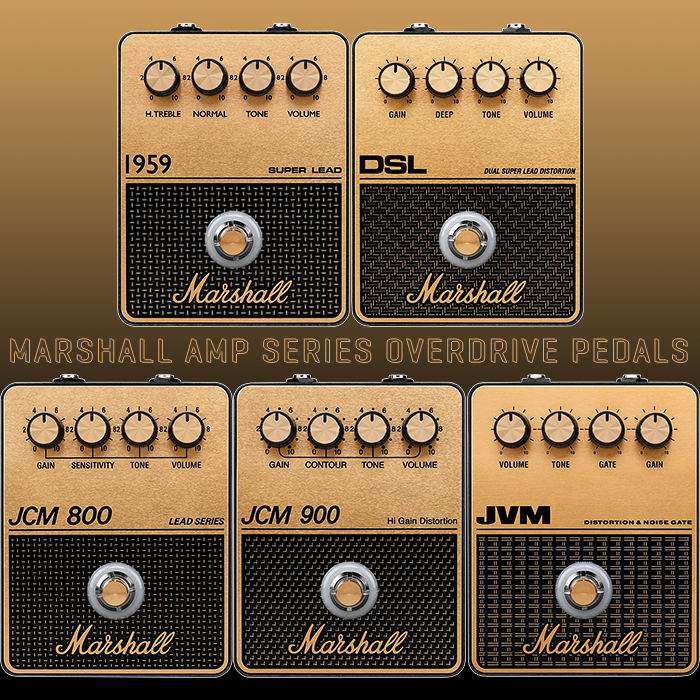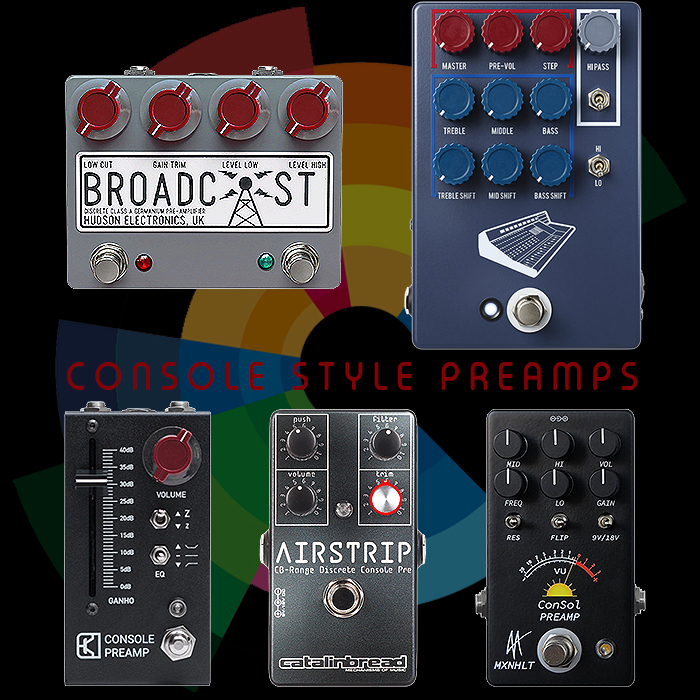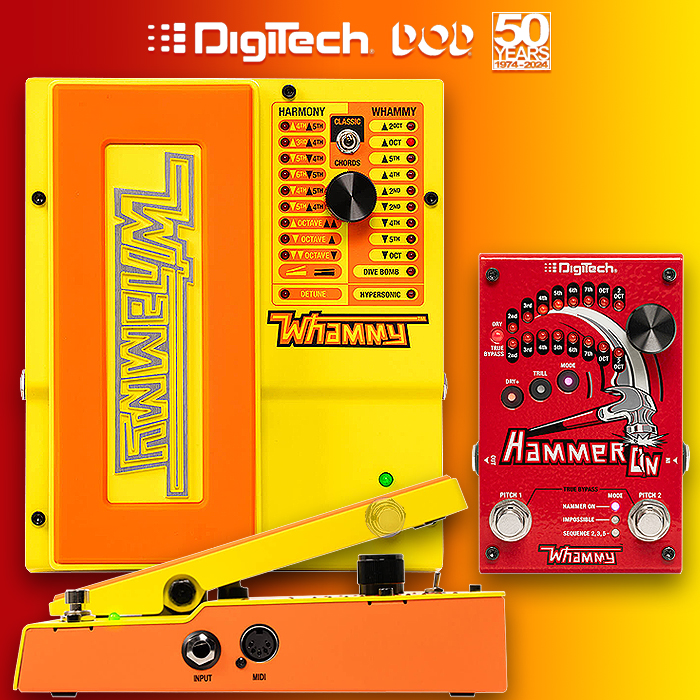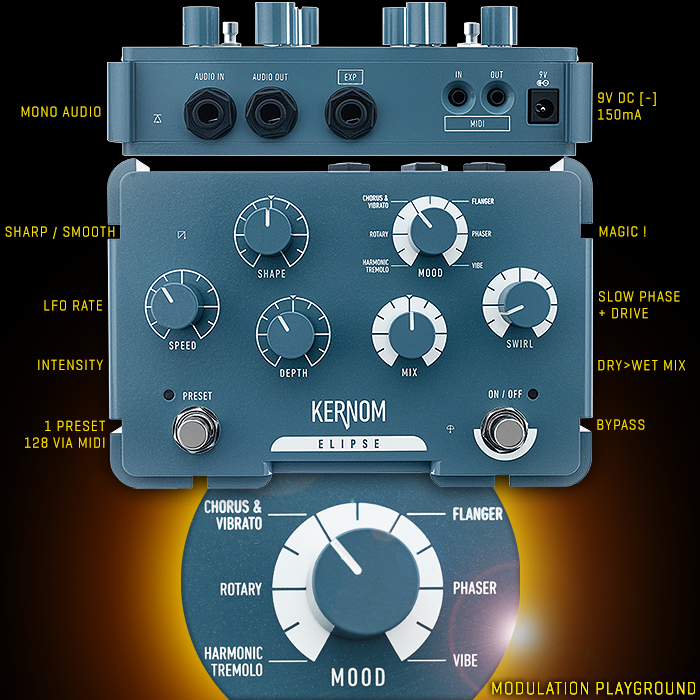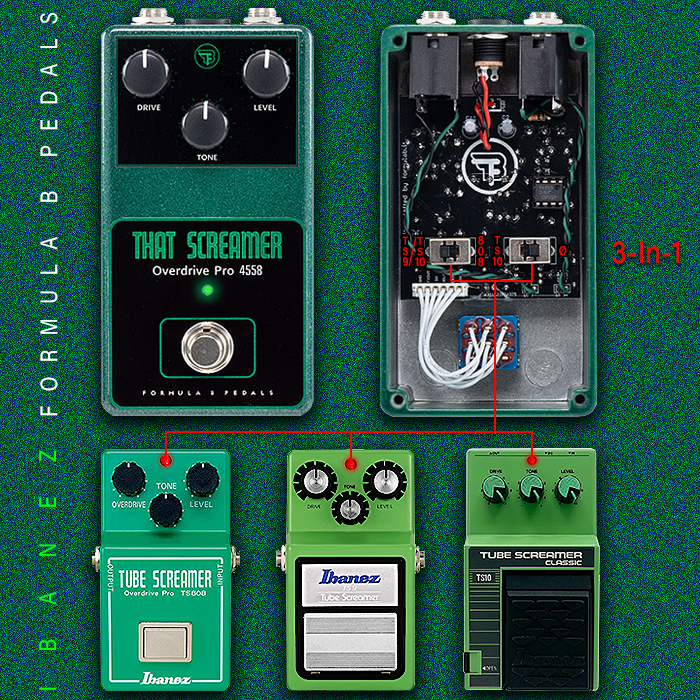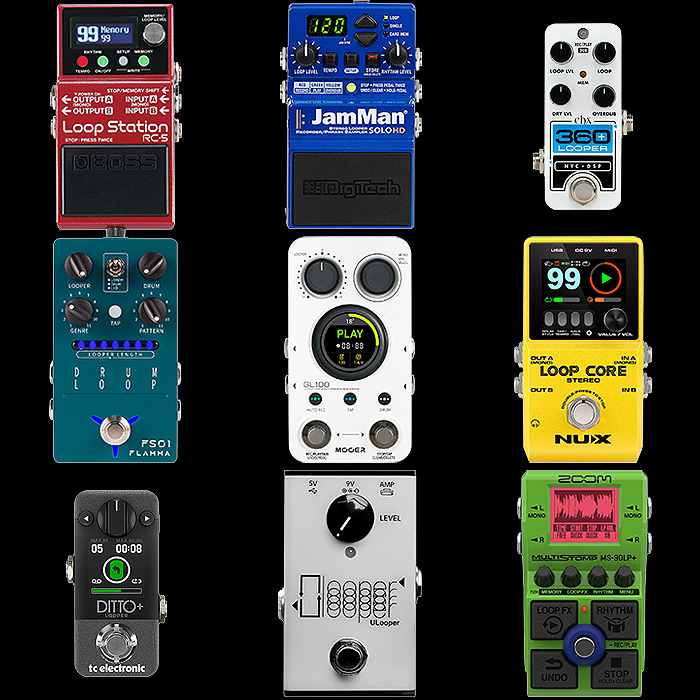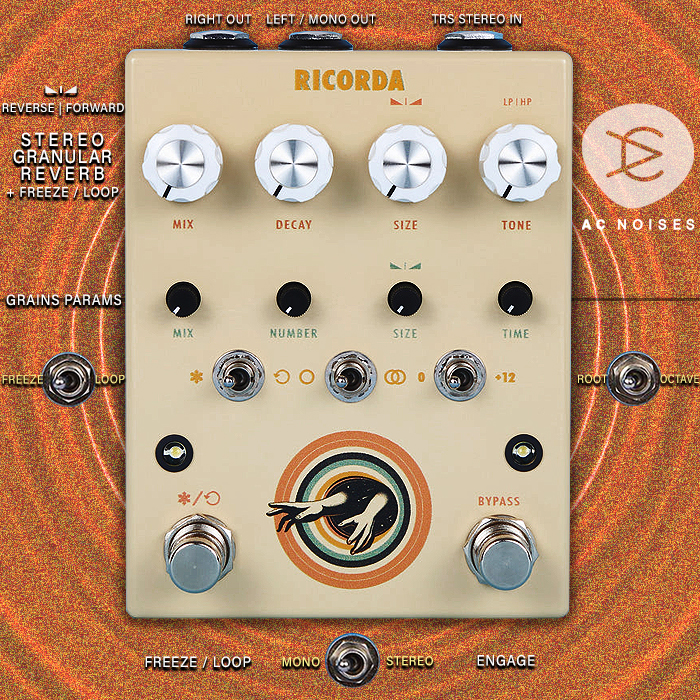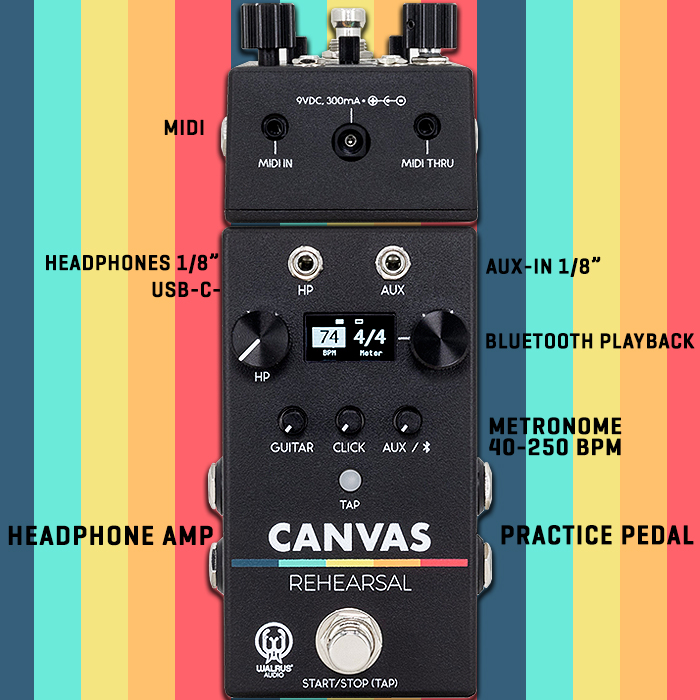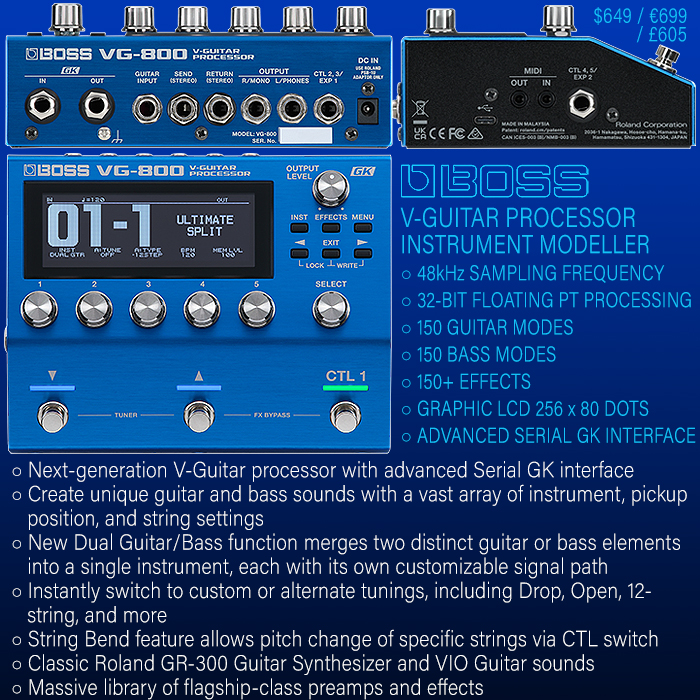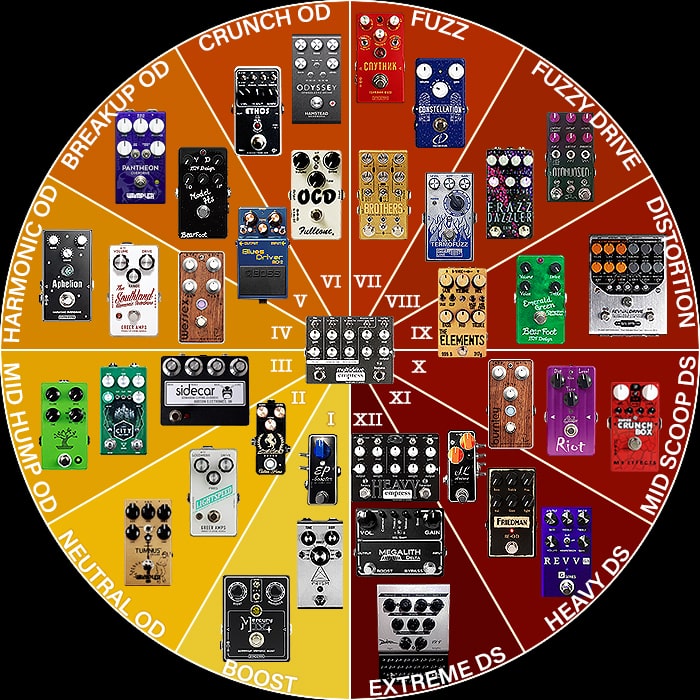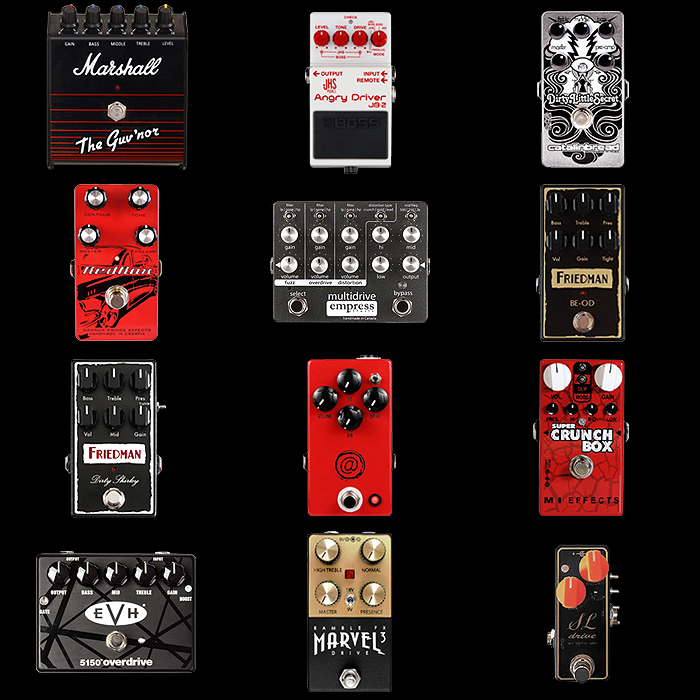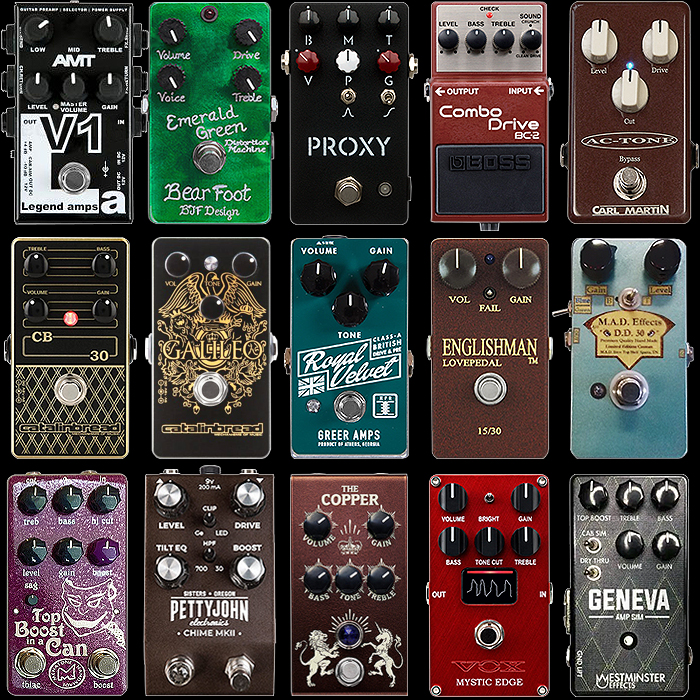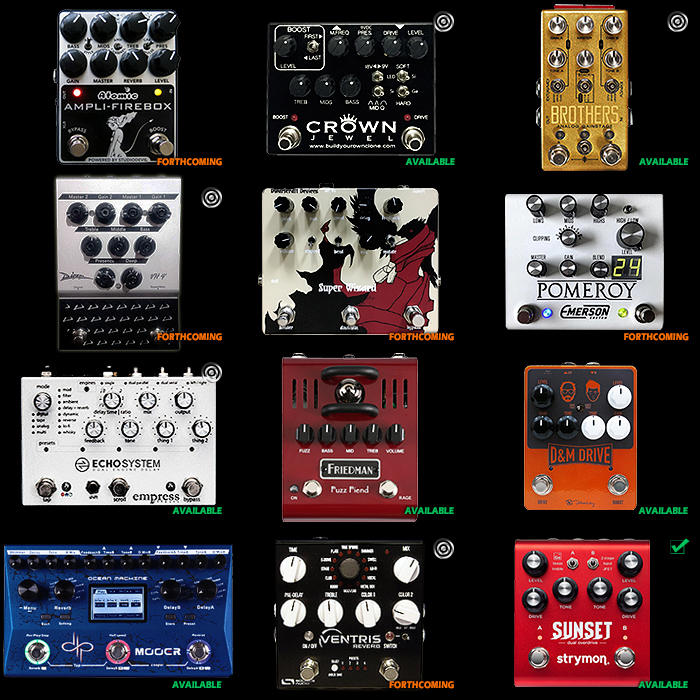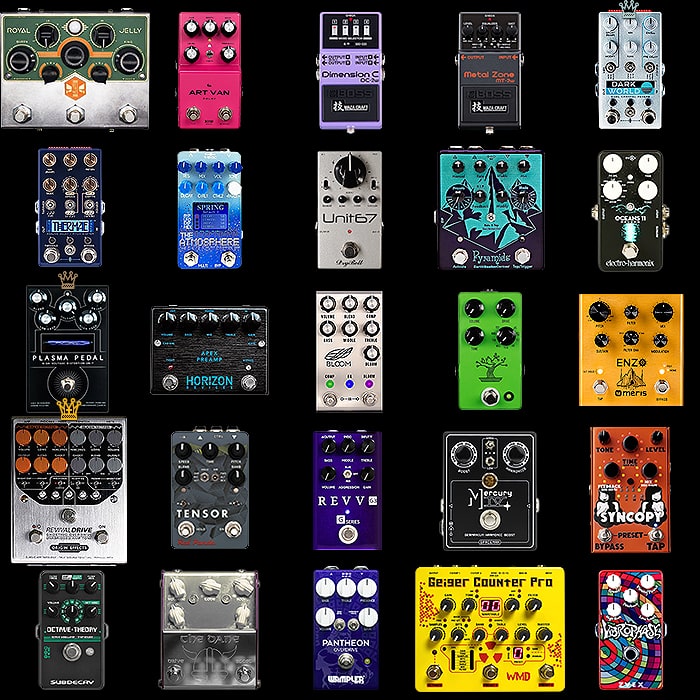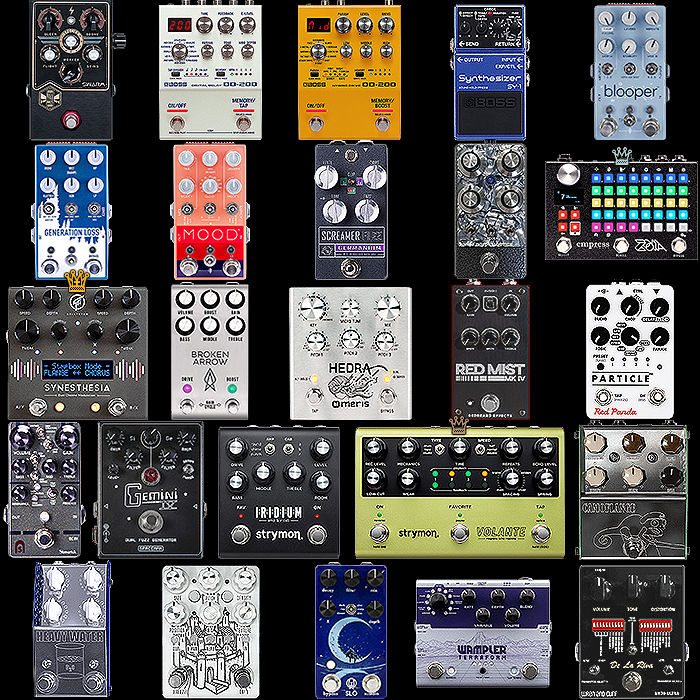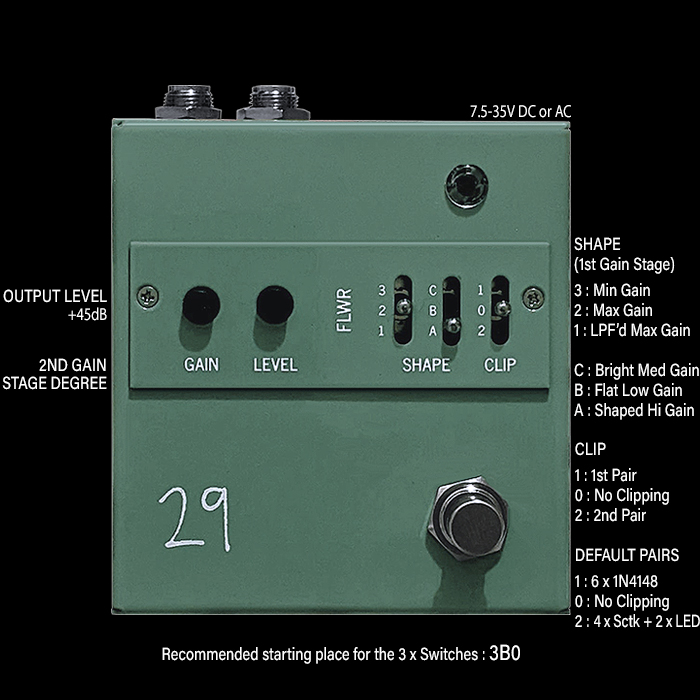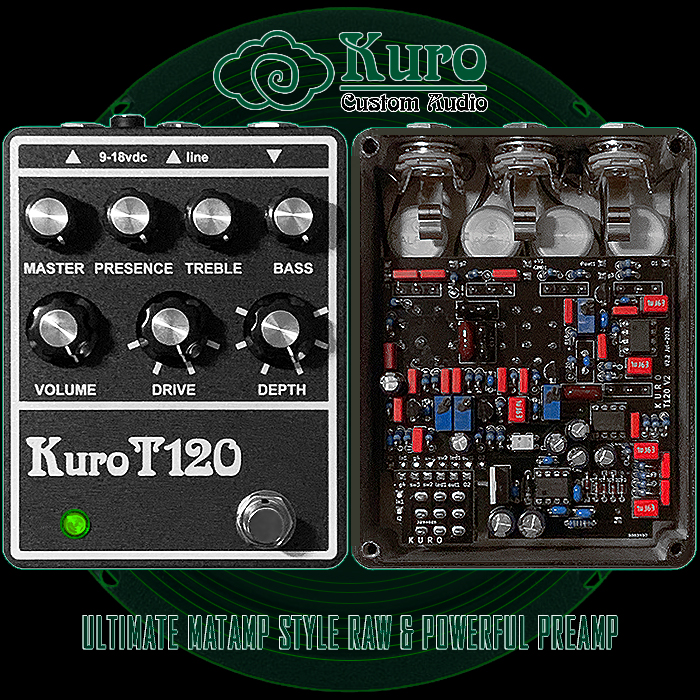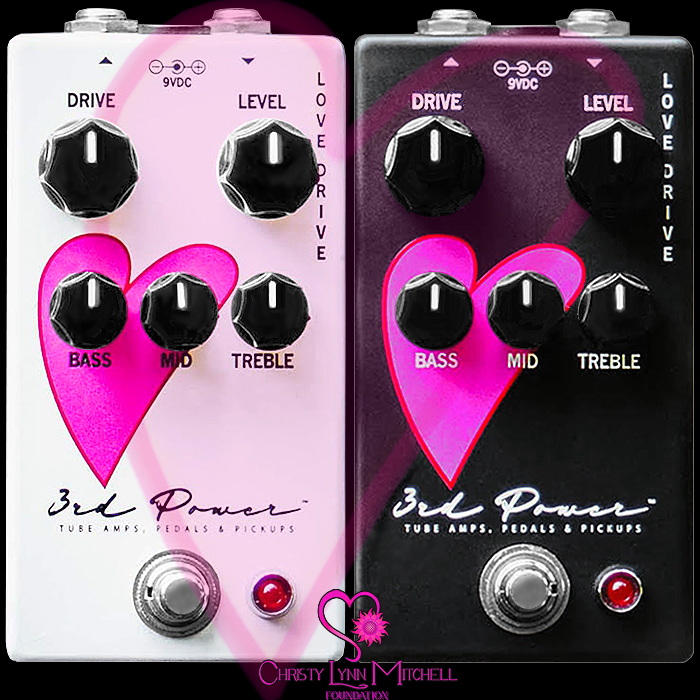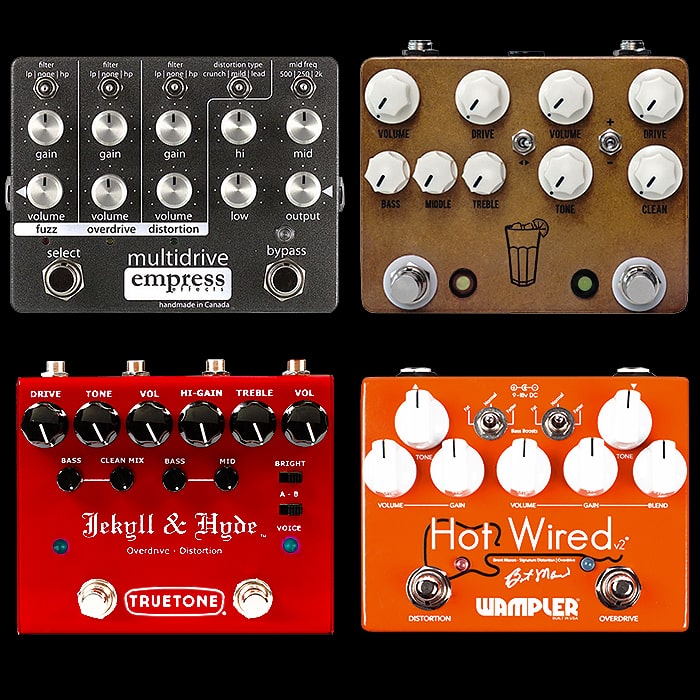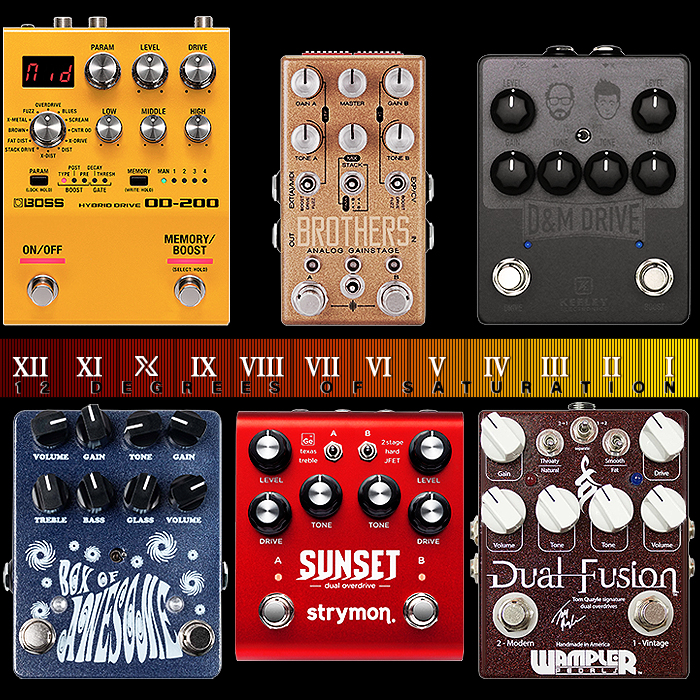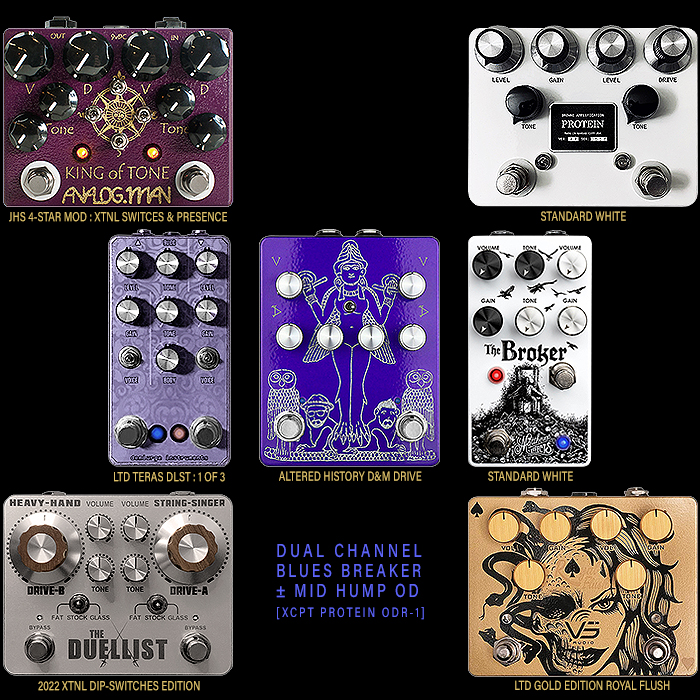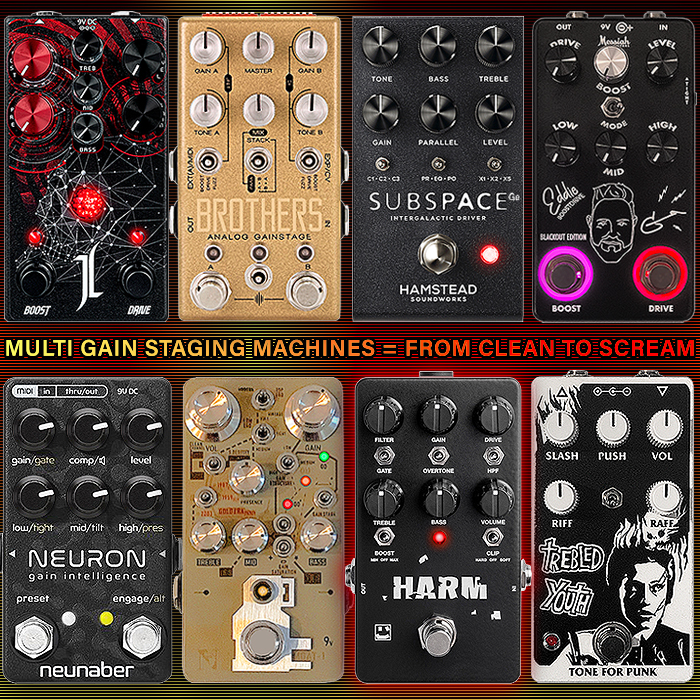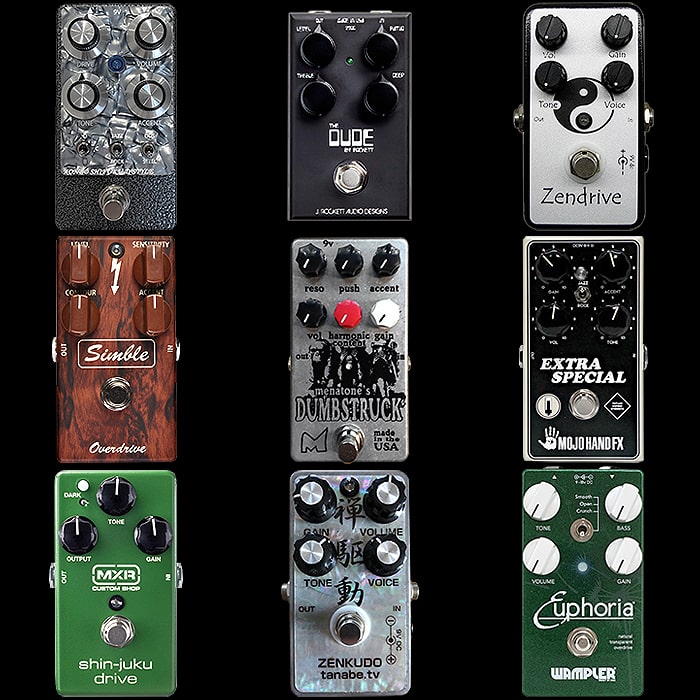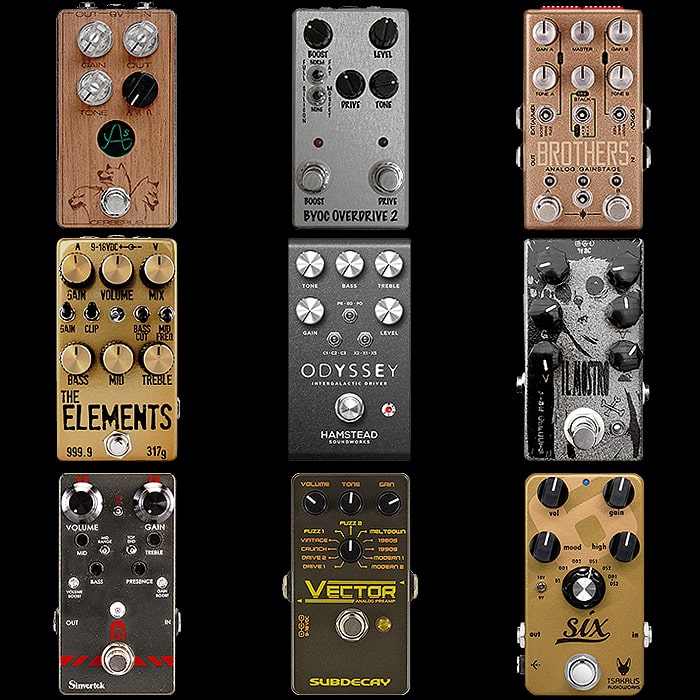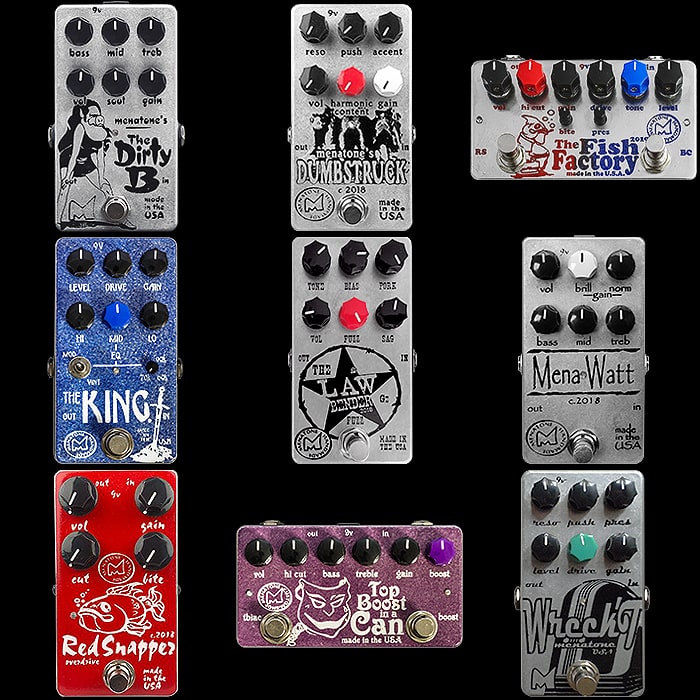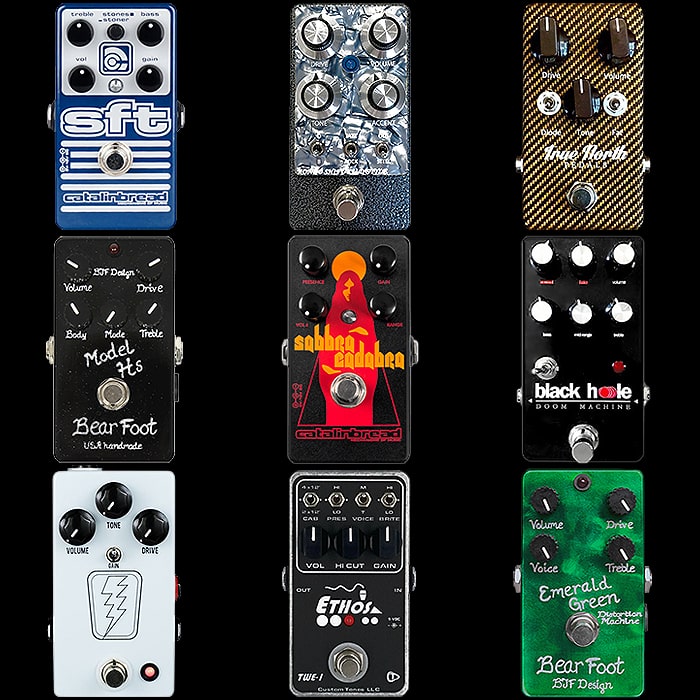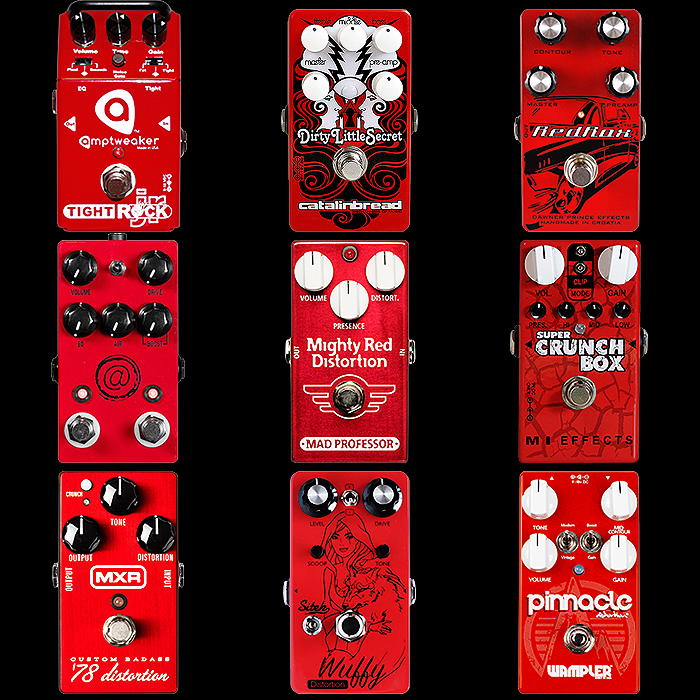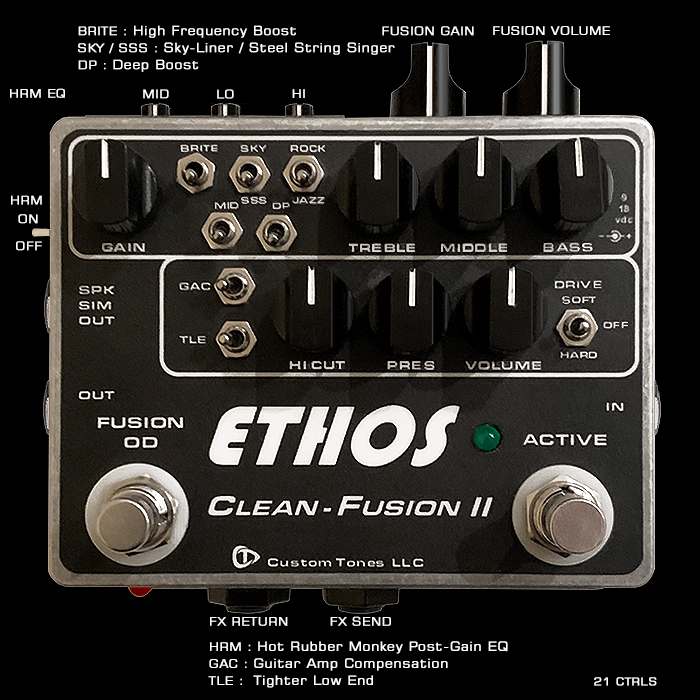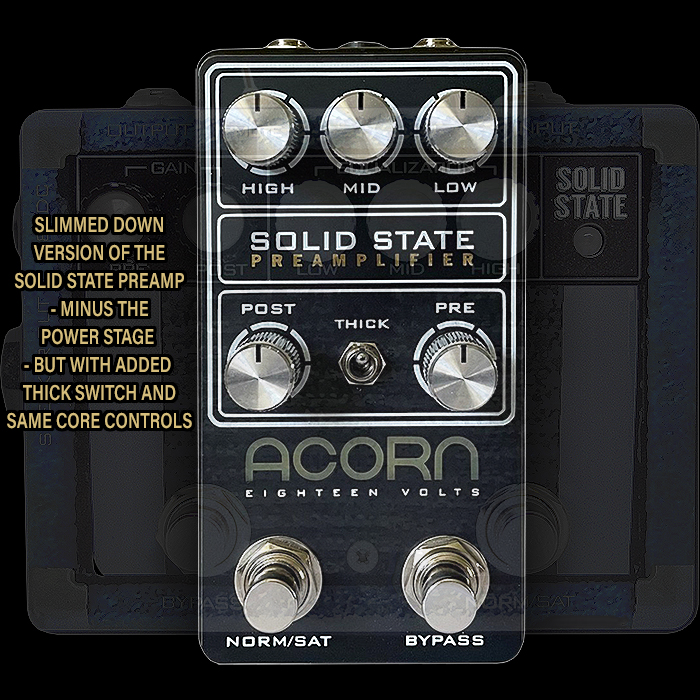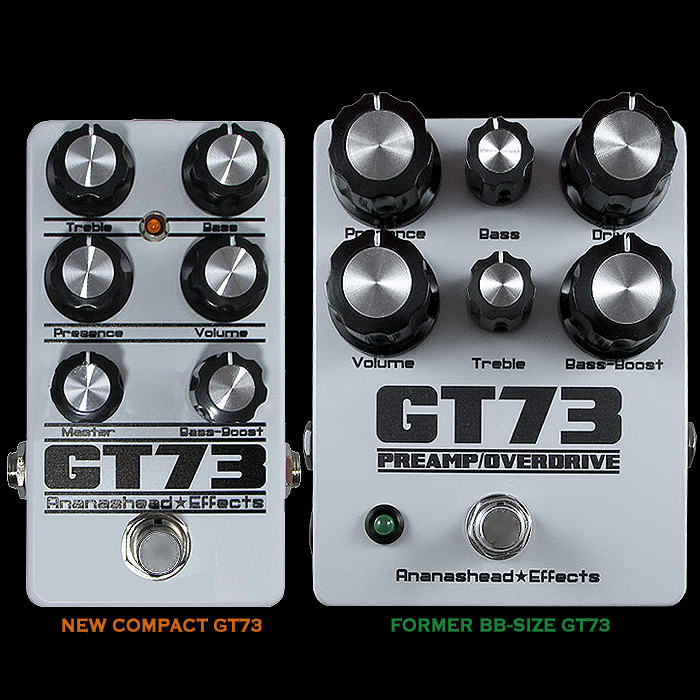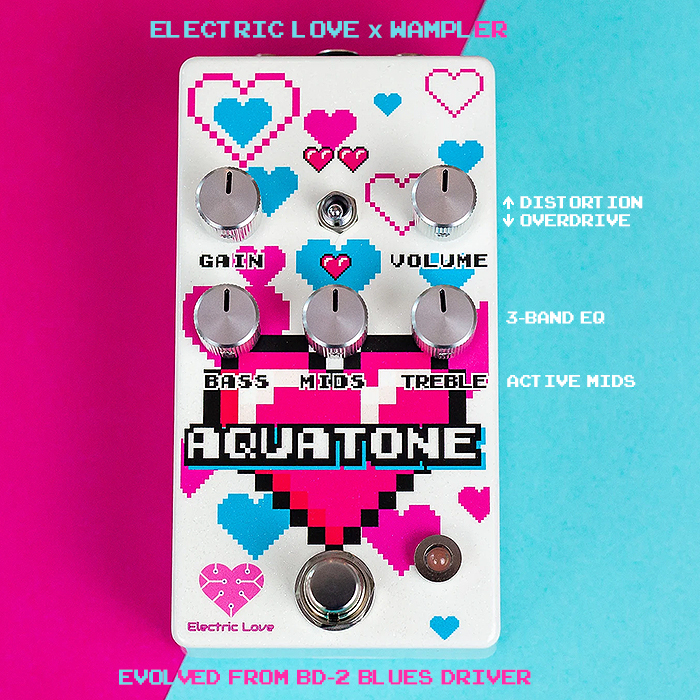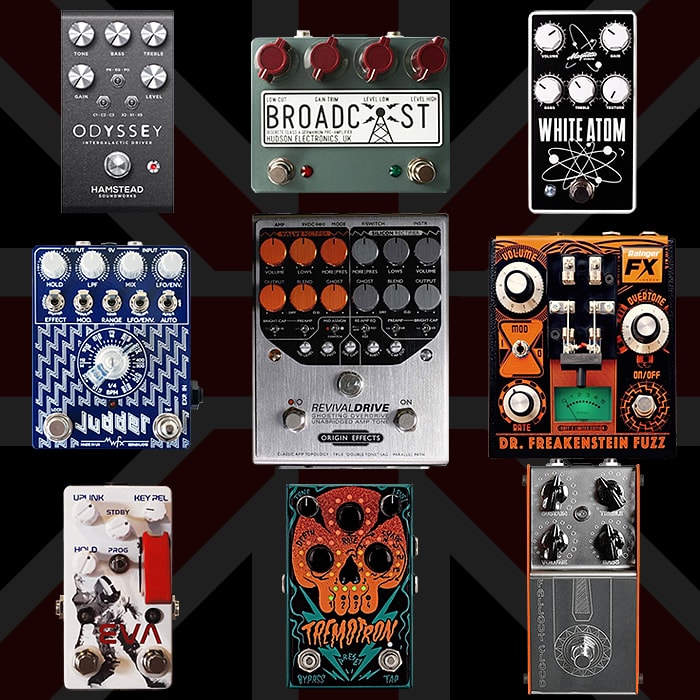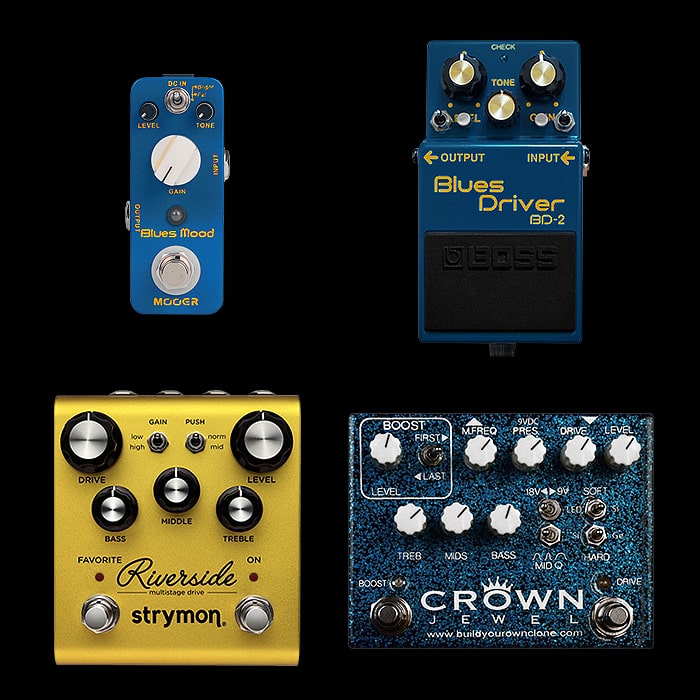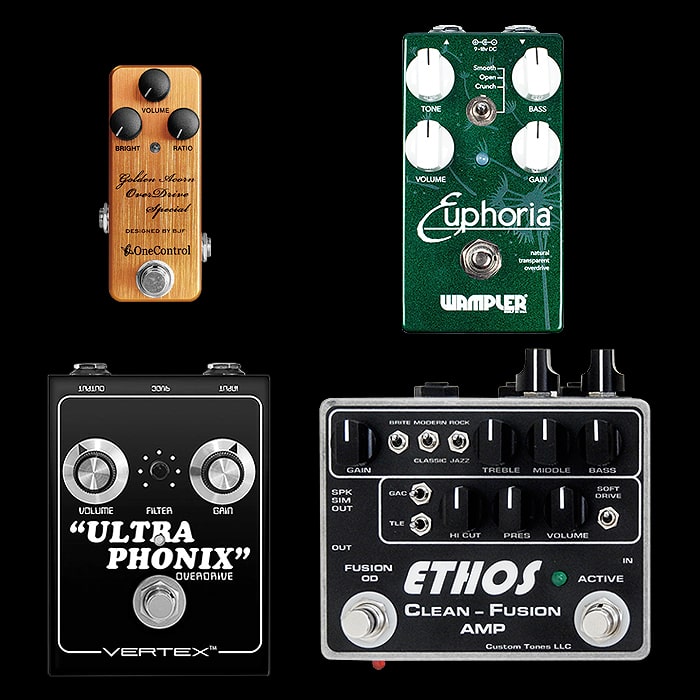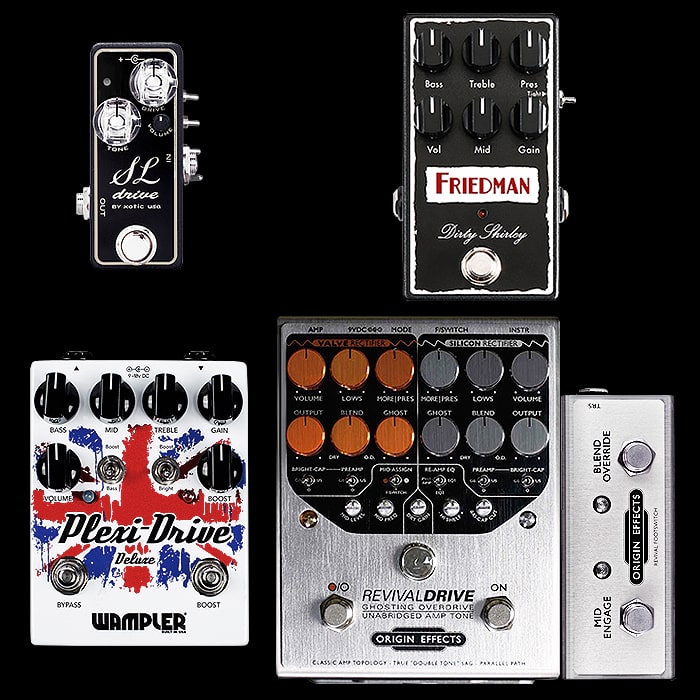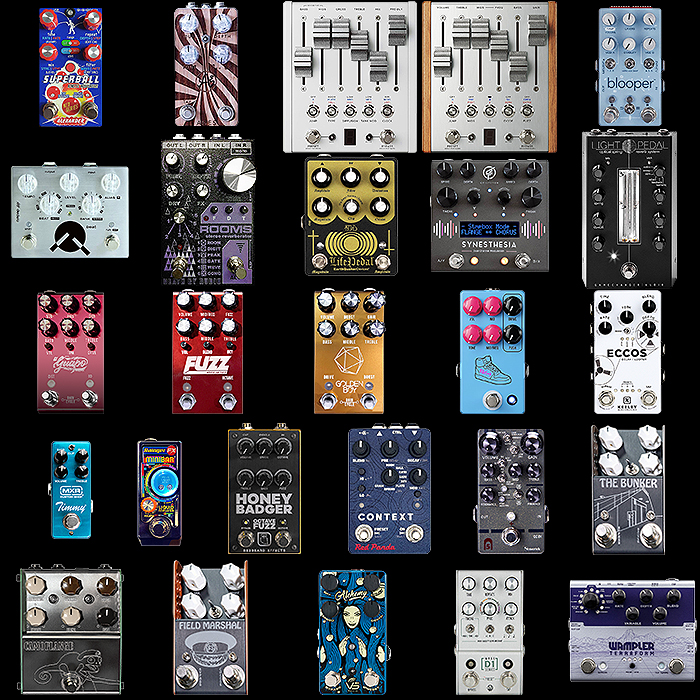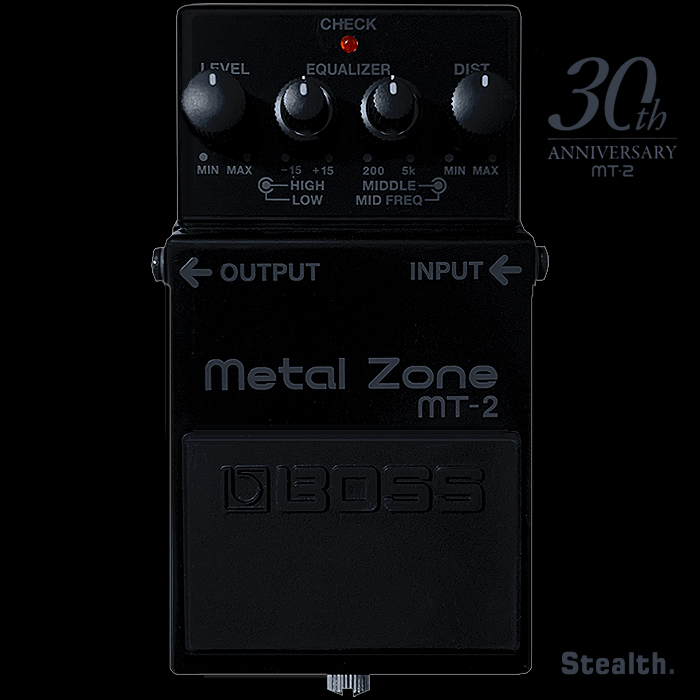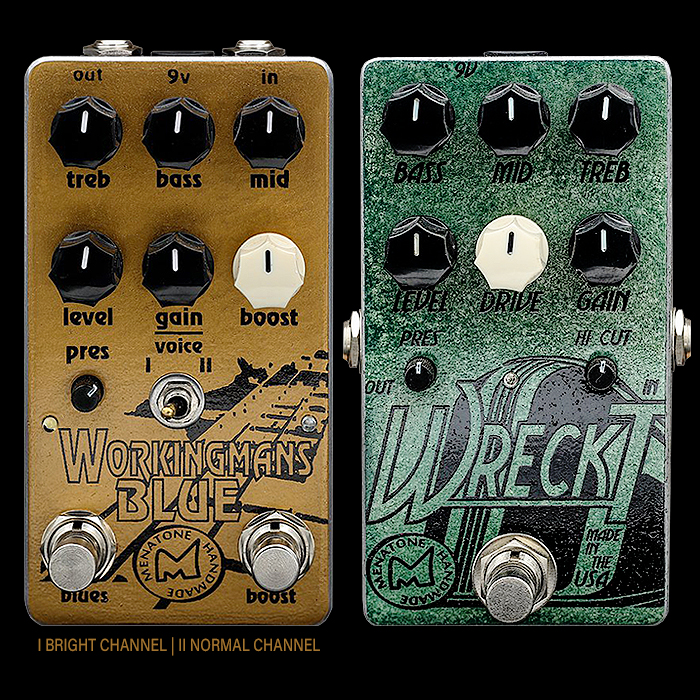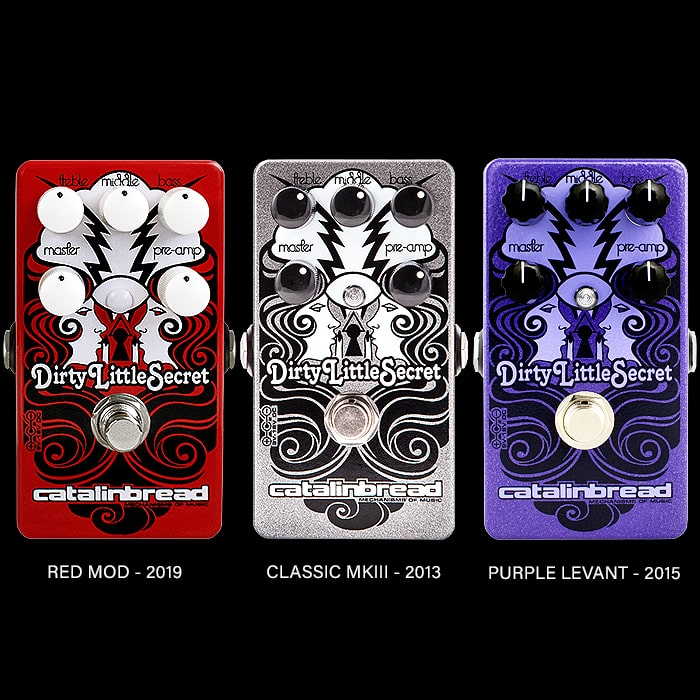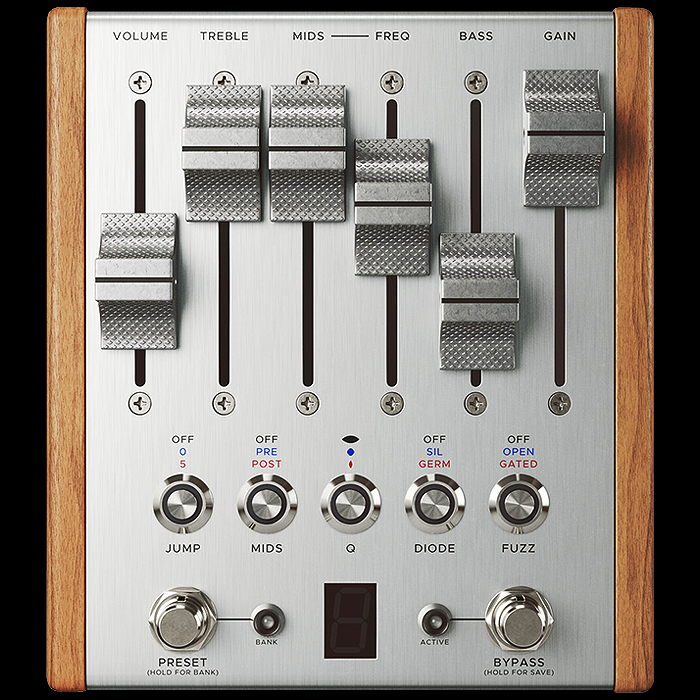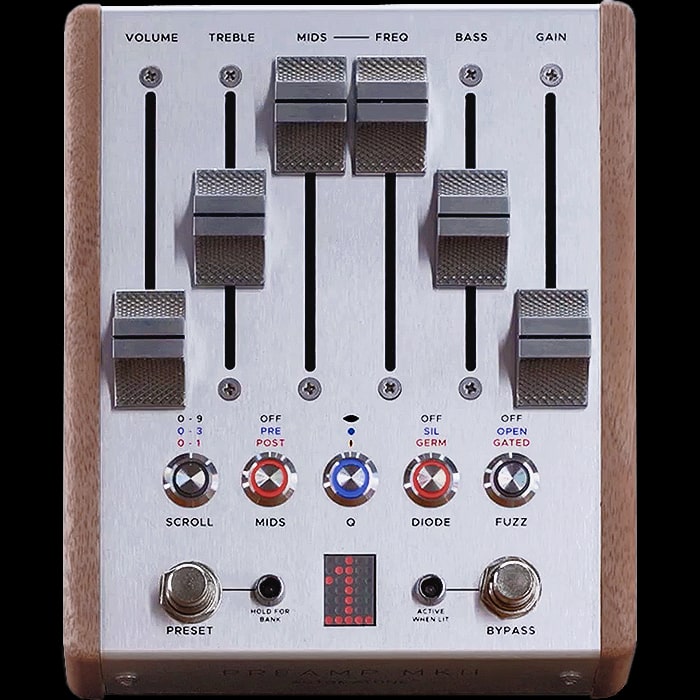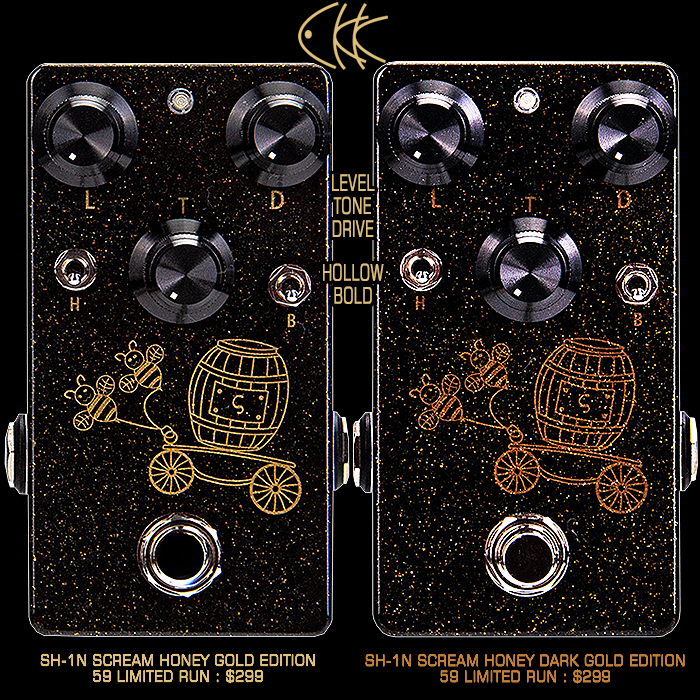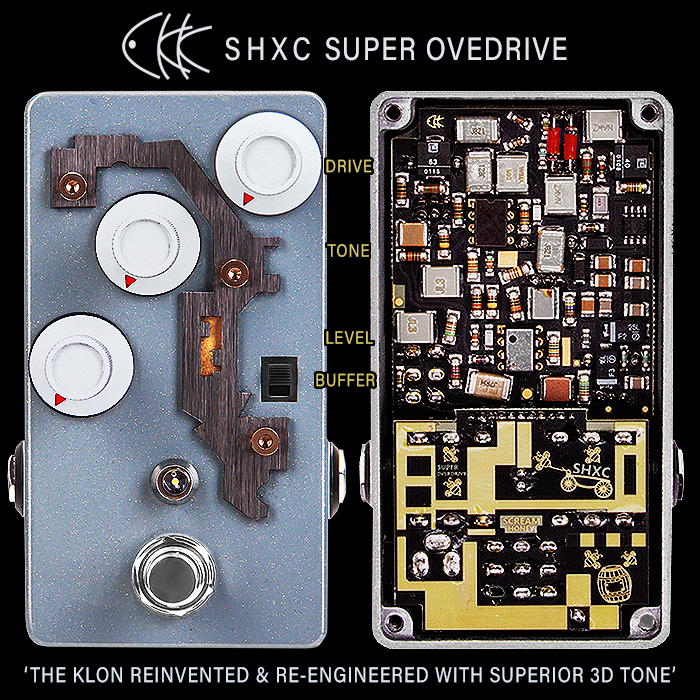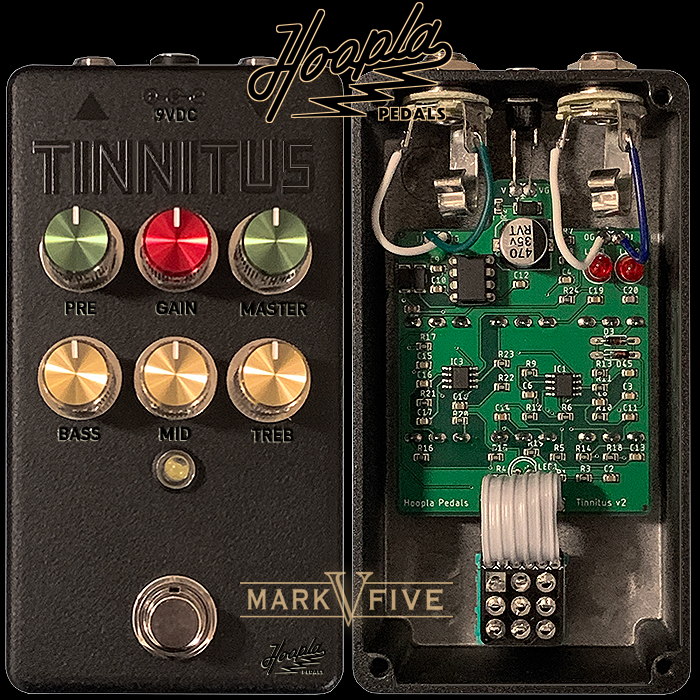In Defence of the more Complex PreAmp Pedals

I am somewhat exasperated to still be seeing several ill-informed nonsense critiques of these more fully featured pedals - where certain factions are denouncing them as sort of jacks-of-all-trade with insufficient core tonal qualities that mean they cannot hack it with just the basic 3 - Volume, Gain and Tone knobs!
I refer below to one of the classic Two Rock Amps - specifically the Silver Sterling Signature - which has 17 exceptionally useful controls - including those 6 mode toggle-switches - which help their owners very cleverly and precisely achieve their exact desired tonality. This is the equivalent provenance and origin of those PreAmp pedals featured above. For which the Sinvertek Drive N5+ seems to come in for a somewhat unfair share of criticism in particular.
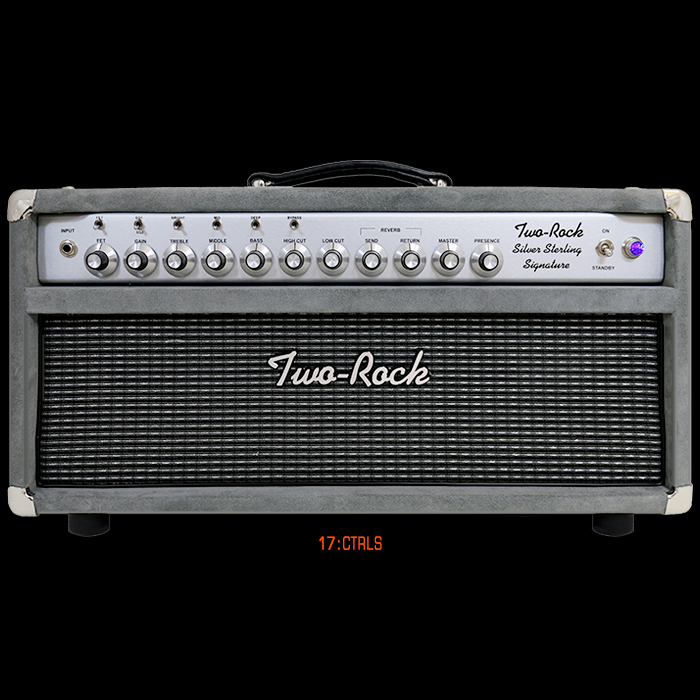
I have 3 of these pedals featured here - the Sinvertek N5+, BYOC Crown Jewel and Origin Effects RevivalDrive Custom - and would dearly like to add the fully-loaded Custom Tones Ethos Clean-Fusion II at some stage - but manufacture of those specific units has long since discontinued and there were very few specimens made with the full extras feature list as per my picture above - and including the post-gain HRM 3-Band EQ.
The pedals above are arranged in order of size and number of controls (CTRLS) - where the Drive N5+ has 12 controls / CTRLS, the Crown Jewel 14, the Ethos Clean-Fusion II 19, and the RevivalDrive Custom has 28. What all these controls give you are added layers of adaptability, versatility and nuance. Simon Keats at Origin Effects talks very specifically about dialling in the RevivalDrive to exactly match the character and output of your amp. But for me all those controls also allow me to take the pedal far beyond any on-rails application - where I can achieve some extraordinary nuanced or differentiated tones and amplify rather than neutralise the differences.
These pedals are all about potential and finesse really. You can start off with a neutral configuration - and then decide you need a little bit more of this ingredient or the other - much like a Chef mixing things up from his spice-rack - a pinch of this enhancement - a little of the other - different seasonings as it were.
Truth is that all these are stellar high-fidelity instruments in and of themselves, and I find the closest most of the critics have come is a YouTube video or two - where many even give their verdict on the basis of a picture alone! Never was the adage about walking a mile in someone's shoes more appropriate. Before you commit to a scathing criticism - at least have the decency to live with the pedal for a while!
The one proviso I would have to mention here is of course time, patience and application. As obviously it will take you longer to acclimatise to a more complex pedal, and longer to figure out how to dial in your preferences. But these are tools for different jobs really. I find with me it's most frequently state-of-mind related - in that you have to be in the right mindset to have a RevivalDrive calibration session - but once you are in the appropriate mood - fun can be had with that pedal all-day-long - particularly if you have the add-on footswitch, which of course everyone should have!
So yes more knobs and switches means more time and effort is required - at the very least initially in the early learning-cycle - but then also as and when you wish to recalibrate significantly. But as a counter argument - the fact is you can transform the soundstage enormously which you just cannot achieve to anywhere the same degree with less detailed pedals. A lot of the simpler pedals have very narrowly defined ranges and often do just one or two things really well. Here we are talking about a myriad of applications for different scenarios. In several ways I prefer the Kuro P.h.A. Boost/Overdrive/PreAmp to the Sinvertek - but then the Sinvertek is considerably higher gain and even more extended-range - and will do things that the P.h.A. cannot. Both are incredible pedals each in their own way and I am very lucky to own both - but they are different tools for different jobs!
At the end of the day these are all precision tools really - and while some tools are just screwdrivers or sanders or saws, you also have super-Dremels! These are essentially the high-end Dremels of the pedal world - at different degrees of overall capability. You could also take the Swiss Army / Leatherman angle / metaphor here to a degree. Or possibly approach it from a more scientific sound-sculpting perspective. Whichever way you look at it - these are fantastic high fidelity instruments - and much rather masters of all than masters of none.
Here follow more detailed overviews of each :
Sinvertek Drive N5+ PreAmp - $199
Your starting point here really needs to be my previous in-depth article on the N5+ - in fact I've done benchmark detailed overviews of the N5+, Crown Jewel and RevivalDrive in particular - which should all be essential reading as they 'unlocked' many a player's understanding of each respective pedal I featured. In the case of the N5+ just think of this as the classic sort of Two-Rock amp topology with nuanced switches to tweak the PreAmp output up or down a notch.
The 7 dials are fairly self-explanatory and all classic controls you might find on many an amp :
- Volume - Output
- Gain - Saturation
- Bass - Low End Frequencies
- Mid - Mid Frequencies
- Treble - High End Frequencies
- Resonance - Output level / saturation of lower frequencies
- Presence - Output level / saturation of higher frequencies
And the 5 toggle switches are really quite self-referential and straight forward too :
- Gain Structure - Vintage (Crunch) / Modern (Tigh High Gain) / Ultra (Fat High Gain)
- Low End - Overall focus of Bass Frequencies - Medium / Tight / Heavy
- Top End Attack - P1 (Mid & High Frequency Focus) / N (Off) / P2 (High Frequency Focus)
- Mid Range - Mid / Low / H - High Mid - Mid Frequency Bands
- { A - Gain Saturation - Red is High / Green is Low
- { B - Tone Profile / Indestity - Blue is High-end Focus, Yellow is Low-end Focus
What this pedal does is allows you to set up your tone mostly via the knobs - and then notch up pr down the degrees of your output / intensity / focus etc. - like stepping through different gears on a racing car. This pedal is honed for high-gain really, but I have actually tended to use it mostly for more moderate gain purposes - and temper down a lot of the tonal elements here. There are all kinds of magical things and step-ups you can do here which you can't on any equivalent pedal really at this size.
The N5+ should be being lauded and celebrated for its innovation - not brought into questioning for its expansive feature set - this pedal is a joy to deploy really - but many seem weirdly to be put off by all the knobs and switches - which is actually what attracted me to it. Actually I say that - I've been a fan of the Sinvertek No.5 / N5 pedals from the start and I have each of the 3 generations - this is one of those rare beasts - a high-class, high-quality Chinese-made and designed proper boutique pedal. This pedal just sounds vital and vibrant and every bit the tube-style amp it replicates - I have recommended this several times on this site before - but people still aren't warming to it for some weird reason - this pedal is truly a modern classic and wholly unique for its footprint!
Build Your Own Clone / BYOC Crown Jewel Multidrive/PreAmp - c£215 equivalent - currently sold out!
The Crown Jewel is my absolute favourite drive and distortion modelling engine - by which I mean a wholly analogue sort of surface-layer breadboarding type device to eke out the tones of pretty much any and every variety of drive and distortion pedal - mostly to fantastic effect - and with a number of fuzz voicings possible too dependent on Boost Module deployed.
The pedal house 3 IC's / OpAmps - a TL072, 4558 and 12F609, also 7 transistors - 1 x 78L05, 4 x 2N3904 and 2 x BS170. You have a variety of diodes for clipping purposes - a mix of Germanium, Silicon and LED in soft and hard configuration. And then you have the core of 3-Band EQ plus Parametric Mids with Q-bandwidth control, and further Presence control. Finally you have a swappable Boost module that can contain a variety of different boost, drive and fuzz circuits to further extend the range of the core pedal. I've said this several times before - every home should have one!
Here is the full list of Boost Modules typically available :
- 18V JFET Boost (Twin 2N5458 Transistors)
- 27V High Headroom Boost (TL081 OpAmp) *
- Experimenter Module (Sort of Breadboard-style Empty Board for DIY)
- Electra Overdrive (2N3904 Silicon Transistor) *
- Fuzz (2N3904 Silicon Transistor)
- Germanium Treble Booster (AC128 Transistor) *
- Hard Clipper (Germanium Diode) *
- LPB (Linear Bower Booster / 2N3904 Silicon Transistor Boost) *
- Pregain Boost (Slightly More Aggressive LPB) *
- Mimosa Compressor (Dan Armstrong Orange Squeezer Style)
- MOSFET Boost * (BS170 Transistor)
- Octave Up (Dan Armstrong Green Ringer Style) *
- Soft Clipper (Tube Screamer-style Silicon Diode) *
It's 14 self-explanatory controls are as follows :
- Boost Level - Degree of Boost
- First/Last - Order of Boost
- M.Freq - Mids Frequency : parametric frequency control used in combinations with Mids (boost/cut) dial and
- Mid Q - 3-way toggle-switch to boost/cut specific frequency clusters
- Pres. - Presence / Sizzle : particularly useful as voicing control for Zendrive-style settings and more strident Metal tones
- Drive - Degree of Gain
- Level - Degree of Output Volume
- Treb - High Frequencies Control
- Mids - Middle Frequencies Boost or Cut : used in tandem with M.Freq dial above, as well as 3-way Mid Q toggle-switch
- Bass - Low-end Frequencies Control
- 18V <> 9V - Headroom Selector - higher value for more clean louder headroom, lower value for more / quicker occurring distortion as regards Drive / Gain dial
- Mid Q - Q Frequency Cluster Bandwidth Selector - left is Normal, middle is Narrow, right is Wide
- LED | Soft | Si - Select Soft Clipping Character : LED left, Silicon right, middle is Off
- Si | Hard | Ge = Select Hard Clipping Character : Silicon left, Germanium right, middle is Off
- Boost Footswitch - Apply Boost as needed : dependent on Boost Module employed
- Drive Footswitch - Pedal On / ByPass Switch
- Dry Blend - Sits in the middle of the right hand side of my pedal to blend clean dry unaffected signal with the pedal’s overdrive and distortion output
If you view my original Crown Jewel article you'll quickly gain an understanding for how powerful this pedal is. I've spent whole weeks with it - eking out every conceivable drive and distortion tone - I always meant to get a few more Boost modules I think I have 3, although I'm not sure I can recall where I stashed them! This pedal is every bit the Crown Jewel that its legend indicates!
Custom Tones Ethos Clean-Fusion II PreAmp - discontinued - from $395 to $630 fully loaded as pictured
I included this pedal very recently in my Medium-Enclosure Dumble-Style Pedals feature - where I indicated that this has been a long-term acquisition target for me, but that I had probably missed the boat - as very few of the fully-loaded versions were ever built, and production has long-since been discontinued on this particular model.
This basically takes all of Alexander Dumble's features and packs them into that medium enclosure - including his own named HRM Hot Rubber Monkey post-gain 3-Band EQ. This will no doubt be a long-term White Whale quest with little hope of success - but I'm generally a positive individual - so of course I live in hope!
Probably way too much going on here for most players - and consisting of rather a more nuanced control over a singular voicing rather than the ability to shape several different voicings like on the Crown Jewel - so very different pedals really. In fact the first mentioned N5+ is its own distinct sort of tube-amp sounding PreAmp, the Crown Jewel can be near enough anything, while the Ethos Clean-Fusion II is solely dedicated to the Dumble ODS amp - so lots of nuance and refinement. As someone who really loves the Dumble-Style drive sound - then this is one of the high water marks of this kind - particularly in as compact a chassis as this - compared for instance to the the full-size Ethos PreAmp or the Van Weelden Royal Overdrive - both of which just aren't remotely pedalboard friendly.
Here are the Clean-Fusion II's 19 Controls :
- 3-Band HRM EQ - Mid / Lo / Hi (Hot Rubber Monkey post-gain passive EQ)
- Fusion Gain - Degree of Saturation for Fusion Drive channel
- Fusion Volume - Output Level for Fusion Drive channel
- HRM Bypass Switch - Ability to bypass post-gain EQ
- Gain (Clean) - Degree of Saturation for Clean Channel
- Brite - Engage Brite Cap
- Modern / Classic Voicing Switch - for more/less sag / tightness / compression
- Rock / Jazz Mode - sort of brighter jazzier mode or darker / more saturated Rock mode
- Treble - High Frequency control
- Middle - Mid Frequency control
- Bass - Low Frequency control
- GAC - Guitar Amp Compensation Switch
- TLE - Tighten-up Low End Switch
- Hi Cut - Engage to Cut High Frequencies
- Presence - Control High Frequency saturation output level
- Volume (Clean) - Output level for Clean channel
- Soft Drive Switch - lower saturation
So as far as I'm concerned the Clean-Fusion II is the ultimate Dumble-style PreAmp for my own preferences in this very specific form-factor - it's just its scarcity and likely price to a degree which makes it a bit of a pipe-dream. The probability of my ever snagging one of these in this specification is extremely remote! Would love to hear from anyone who has exactly this unit with all the extra options. In the meantime I'm more than happy to rely on my trusty Demon Pedals Kondo-Shifuku, which is my all-time favourite Dumble-style pedal - and in a beautifully compact enclosure.
Origin Effects RevivalDrive Custom - with Footswitch - £559 + £89 = £648
As mentioned in the intro here my First Impressions feature on the RevivalDrive unlocked the secret of this pedal's workings for many and largely demystified its calibration and setup. The fact that it has no less than 28 controls will put off a whole lot of you, let alone the significant price tag - where you have to include the optional footswitch - which for me is not really optional at all.
I tend to start with all the dials at 12 o'c or fairly neutral settings, then select my PreAmp and Bright Cap flavour for each channel as a starter for 10 - and then adjust to taste. I forgot to mention that I consider the Custom Model Front EQ Panel an essential too - and without the panel and footswitch - the pedal looses roughly half of its cleverer abilities.
I likened the exercise of tweaking the different switches as being at an opticians when they're fitting you out for prescription glasses - and they do the thing with the lens contraption (Phoropter) where they A/B different varieties and ask you if Option A seems better than Option B, then is C better than B etc. You go through a similar exercise on this pedal - and I took quite copious notes each time at the start - as I got some really interesting tonalities in various of the 'dark spots'. i.e. I recognised different tonal characteristics that I could use for different genres.
Generally though the Left Valve Channel for me is set to a Boosted AC30 tone, and the right is Medium-Gain - but fairly bass-heavy Plexi style. I also have a lot of fun in warping those voicing to sound quite different - by playing around with the EQ2 settings in particular on the Front Custom Panel.
The RevivalDrive's 28 Controls are as follows :
- Volume - Gain Saturation
- Lows - Low Frequency control
- More | Pres - Negative Feedback / Saturation CCW, Presence CW
- Output - actual Volume / Level
- Blend - Dry > O.D. : degree of clean unaffected signal
- Ghost Note - A sort of electronic resonant echo based on capacitance interference in power supply stage
- Bright Cap - Bright Capacitor / Brightness setting - GB | 0 - No Capacitor added | US
- PreAmp - Core tone-shaping - GB | 0 - Treble Lift | US
Above settings are X2 - or the same for both Valve Rectifier and Silicon Rectifier Channels - so 16 controls in total so far. The GB voicing is slightly more mid-focused versus the flatter EQ of the US - while both are significantly brother than the 0 / Neutral settings.
Refinement Trimpots and switches :
- Bright Cap Cut - mini-screw-dial which fine-tunes Bright Cap values as above - used in conjunction with 3-way Cut Frequency selector on Custom Front Panel
- Cut Frequency - I/II/III : varies low-pass frequency of Bright Cap Cut Filter trimpot above
- Dry Gain - Clean/Dry Channel Level for Balancing for Blend Override via Footswitch
- Hi Shelf - Subtle Treble Boost/Cut used in conjunction with 3-way Shelf Frequency selector on Custom Front Panel
- Shelf Frequency - I/II/III : varies shelf frequency of the Hi Shelf filter trimpot above
Mid Assign :
- Footswitch - Valve side | Footswitch-controlled | Silicon Side
- Mid Level - Mids Cut / Boost
- Mid Frequency - Mids Frequency cluster select
PreAmp EQ :
- PWR Amp - Direct-In to Power Amp
- EQ1 - Brighter Sounding Amp
- EQ2 - Darker Sounding Amp - also opens up EQ2 settings on Custom Front Panel
EQ2 Panel
- Mode - I is Bright | II is Dark
- Frequency - I/II/III : Shifts frequency focus of the EQ up or down
- Adjust - Sort of EQ-Tilt trimpot - CCW is More Treble, Less Bass | CW is More Bass, Less Treble
There's no question that there is a some significant learning curve to this pedal - but it's all kind of logical really when you think about it and once you get into it - you just need to go about things fairly methodologically here - certainly not for the fire-and-forget brigade.
The beauty of this pedal is really in the nuance of its refinement and adaptability - I have other pedals that have more range on the various EQ dials - but don't give you anywhere near this level of precise calibration. This pedal is setup so that you can get truly amazing results out of it. Obviously it will be too much for many players in various ways understandably.
Final Thoughts
I have to say again that each of these pedals is a marvel of engineering truly and each is capable of really extraordinary things. All 4 have their pros and cons to a degree - while no pedal has as much refinement and nuance in that way that the RevivalDrive delivers, and I know no other pedal which is as capable of quite as may different quality voicings as the Crown Jewel - somewhat considerably more so than my already fantastic other multi-tasker - the Empress Multidrive.
The N5+ has extraordinary range, dynamics and poise for a pedal of any size - let along those compact dimensions, and the Clean-Fusion II just has to be the most feature rich Dumble-style PreAmp. I know several players who have these pedals and all seem to love them. I'm certainly not willing to part with any of my 3 - in fact I'm kind of still considering the Hot Rod version of the RevivalDrive too! Which is probably more suitable for my style of playing as it deals with higher gain range. The Custom Hot Rod edition is even dearer at £585 - I would certainly be negotiating hard with Simon Keats when I come to that decision.
As mentioned above, I still live in hope of snagging a fully-loaded Clean-Fusion II in some fabled future timeline however unlikely that may seem. There is another different challenger on the scene now which threatens all of these to a degree even though quite different - that challenger is of course the Chase Bliss Audio Automatone PreAmp II - which I'm certainly planning to secure before year-end - just need to save up the funds - which means less spending on other pedals - which is difficult really as I need to feed this blog, and the majority of pedals I acquire are done so in service of this project!
I'm guessing there are still readers that remain to be convinced that these sorts of pedals are for them - but hopefully they will stop slandering their existence. Just please don't condemn something without actually properly trying it out - and don't be too quick to dismiss something you might not fully be grasping what purpose it serves. Not everything is meant for everyone - there are plenty of pedals that don't appeal to me - I just focus on the positives though - and what I like! Do let me know if there's any love for this quartet of precision tone machines featured here!







